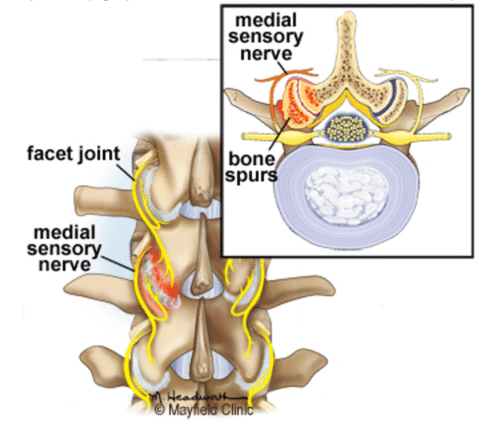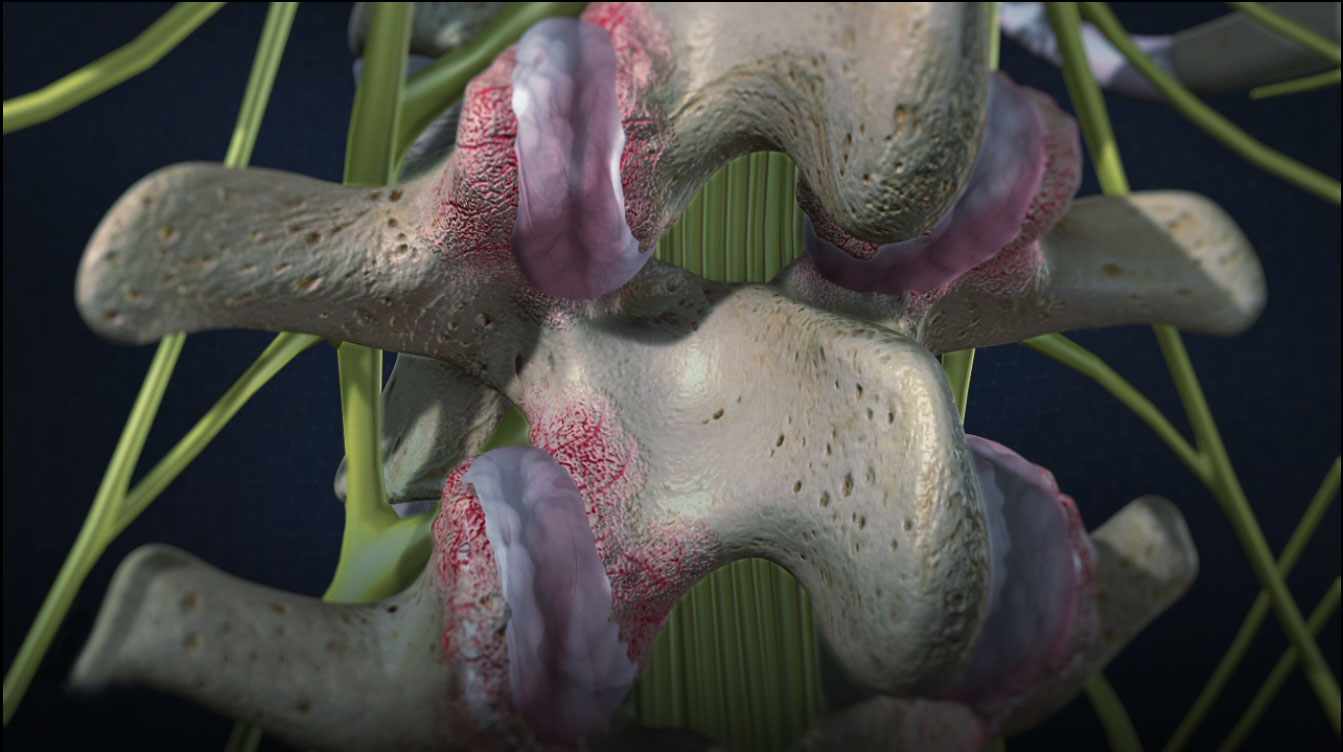Facet Joint Syndrome
What is it?
Facet joint syndrome is an arthritis-like condition of the spine that can be a significant source of back and neck pain. It is caused by degenerative changes to the joints between the spine bones. The cartilage inside the facet joint can break down and become inflamed, triggering pain signals in nearby nerve endings.
Pain that comes from one or more facet joints is called facet joint syndrome or facet arthropathy
What Causes Facet Joint Syndrome?
Degenerative changes in the spine may cause body weight to shift unevenly to the facet joints. This extra burden causes wear and tear on the joint and changes it over time: the joint capsule thins, smooth cartilage breaks down and becomes irregular like a cobblestone street, and bone spurs may form (Fig. 1). Similar to arthritis of the knee joint, these changes make it difficult for the joint to move fluidly and it reacts by becoming inflamed and irritated. The irritated joint sends pain signals to the brain via small nerves in the capsule called medial branch sensory nerves (Fig. 2). In turn, the muscles in the area can stiffen and spasm.
What are the symptoms?
Facet joint degeneration can be painless until an event triggers symptoms. There are several symptoms that indicate a person’s pain is coming from the facet joints. The pain is often a diffuse, dull ache in the low back directly over the spine that can spread to the buttocks. In the neck it can be felt in the shoulders and back of the skull.
Movements such as bending backwards or twisting sideways towards the affected joint will cause pain. Standing or periods of inactivity may worsen the pain. Activities that take the weight off the joint such as sitting, leaning forward, or changing positions may ease the pain. Facet joint symptoms may also mimic the pain of a disc herniation. Pain may be felt down the arms or legs if bone spurs form and press on the spinal nerves. The pain may be chronic, or come in periodic flare-ups.
Figure 2

The irritated joint sends pain signals to the brain via small nerves in the capsule called medial branch sensory nerves
Treatment
Medication, physical therapy, facet joint injections, nerve blocks, nerve ablations and Endoscopic Rhizotomy may be used to manage symptoms. Our philosophy is to make the pain or the symptoms of the patient disappear “step by step”, meaning that not always is needed to undergo a major surgery when there are other ways to resolve the problem with the Endoscopic & Minimally Invasive Techniques that are used from our specialized team that is examining always the symptoms and the indications in order to use the best under guidelines technique to resolve the problem of the patient.
